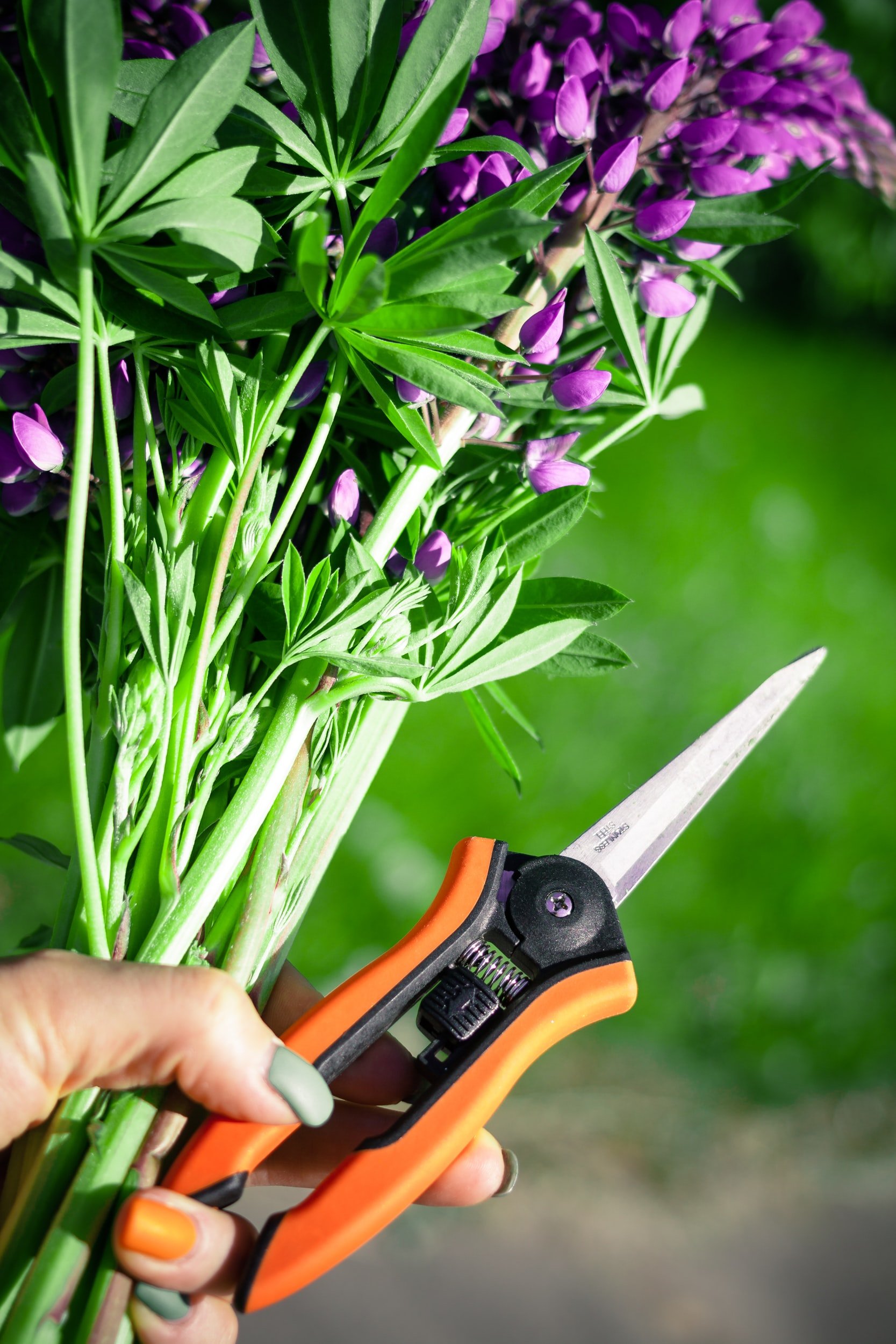How To Care For Fresh Cut Flowers
While at a pop-up earlier this summer a family came up and began admiring and talking about our flowers. One of the kids chimed in the conversation and said, “yeah but they’ll only last about 3 days”. This is the experience many of us have with the bouquets we receive.
Her sentiment is a frustration shared by many who have bought or received a flower arrangement. It doesn’t have to be this way, especially with local specialty cut flowers. One of the most important things to remember is that the flowers and foliage in your bouquet are living things that can be encouraged to thrive by taking a few steps to care for them every few days.
Step 1&9 - Start and end with a clean vase
If you are using a vase from home, make sure you have cleaned it in hot soapy water or a dishwasher after your last bouquet is finished. As cut flowers age, bacteria build up in the vase. It will not go away if you simply empty the vase and let it dry. You may not see it with your eye, but the bacteria will still be on the glass. As soon as you add water, the bacteria are back in action. Give your flowers the best start right way by choosing a clean vase
Step 2 - Refill water as needed and change the water completely every 1-2 days
Flowers like to drink, and it’s not uncommon for them to take in all the water in the vase in the first day or two that you have them at home. Make sure you maintain a level of water in the vase. Every 1-2 days change and replace the water with fresh water. After a several days, you may notice a little scum or buildup on the vase. If this happens wash the vase well with hot soapy water. Keeping your stems in clean water and a clean environment will minimize bacteria growth and help keep your flowers looking their best for as long as possible.
Step 3 - Trim the flower stems
If you receive a wrapped bouquet this should be done once you get the flowers home. If you receive a vase, this can be done starting with the first time you change the water. Trim 1-2 cm or ½ inch off from the bottom of the stem. This fresh cut will allow the flower to drink up more water again. As you trim, remove any leaves that are near or in the water. They will only add more bacteria to the water. Try to keep all leaves above the top rim of your vase.
Step 4 - Use flower food
Yes, those flower food packets do help! Especially with specialty cut flowers. Add the food from your packet into a vase using the ratios and instructions on the packet. If you run out of food, you can make your own cut flower food with 1-quart warm water, 2 Tbsp lemon juice, 1 Tbsp sugar and ½ tsp household bleach.
Step 5 - Use sharp scissors to cut your stems
The stem is filled with soft tissues that help transport water to the flower. When trimming the ends, it is important to use sharp scissors or a knife. This will help ensure that the tissues in the stem remain intact and are not smashed during the cut. For most flowers, cutting at a 45-degree angle will give the most surface area for water update.
Step 6 - Keep your bouquet away from direct sunlight
Cut flowers add beauty, color and texture to any room, but unlike many house plants, sunlight is not their friend. Sunlight encourages plants to grow, but with cut flowers, which are cut at their prime, sunlight will only encourage their aging and ultimately their demise. Placing them in a cool spot on a counter or table away from direct light is the best choice to encourage long lasting blooms.
Step 7 - Keep your arrangement away from ripening fruits and vegetables
Ripening fruits (apples, bananas, etc.) give off ethylene gas as they ripen. This gas is invisible, odorless and harmless to humans, but it is a very natural signal to plants in their aging process. Flowers come before fruit and plants develop fruit or seed pods to reproduce and start their growth cycle all over again. When cut flowers are exposed to ethylene gas from these ripening fruits, the plant takes that as a signal to begin dropping leaves and encouraging fruit and seeds to form. Keeping your cut flowers away from these ripening fruits will help keep those petals from dropping prematurely. Mother nature fascinating.
Step 8 - Don’t be afraid to change vases and rearrange
Bouquets and arrangements are filled with many different types of flowers and foliage, each with their own vase life. As some stems age out, they can be removed to keep their decaying bacteria away from those flowers that are still going strong. Don’t be afraid to downsize your vase and have fun re-arranging your bouquet as you remove those aged elements. I often find I can get 2 or 3 different “bouquets” for well over a week as I tend to and care for my cut flowers.



